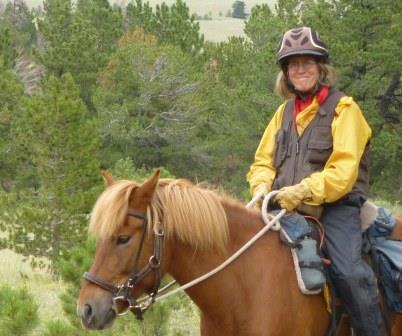
Home > Dispatches > Daily Dispatches 2014 >Daily Dispatch #343
December 24, 2014: Part II Zen Mind, Zen Horse: The Science and Spirituality of Living with Horses
Storey Press went all out in publishing this book. There are lots of water color illustrations, diagrams, photos – and the entire text is nicely laid out. They obviously had high hopes for this book – I do hope that they were realized. Thinking positively – what I’m going to do with this book is consider to be a reference guide and use it as a jumping off point, which is to do further research on some of the things that Hamilton merely alludes to. Some of his points follow: P. 39 Reading energy: Hamilton writes about this early on, noting that first impressions often register instantly in the brain’s right hemisphere. |
|
| Furthermore, such snap decisions are “gut reactions” which are differentiated from the “logical deliberations of the dominant left hemisphere.” He adds that the ability to communicate clearly, quickly, and silently is vital to a prey animal’s survival . . . so in order to become adept with horses we must become sensitive to chi and “turn it up again.” The snap decision information – this makes me think of Malcolm Gladwell’s book Blink, for he is saying exactly the same thing. I’d add that in order to become adept with horses that we must become sensitive to chi and “turn it down again.” I say this because I think that sometimes some horses, like some people, desire to be surrounded by low key individuals. P 68 Intention: Hamilton says that change in energy occurs because our brains package it to make anything happen. Every action, no matter how minute, occurs only with intention. Intention assembles and organizes energy so that the action can be carried out. Then the energy dissipates. The sequence within the brain includes these stages:
This is how the sequence might be translated in terms of energy:
Says Hamilton, through a skilled interpreter, our equine partner, we can translate the abstractions of energetic intention, assembly, action, and release into their physical equivalents. We can feel them, increase or decrease their amplitude, or move them faster or slower. We can practice these central physical concepts in a direct, physical way that allows us to understand them, to observe them, and to apply them. I see intimations of the use of pressure/release here. Intention and assembly would be the thought process that precedes the use of pressure/release and action and release would be the use of pressure/release itself. Seems to me that more needs to be said here. P. 47 Chunking down: This involves breaking taught tasks into tiny steps. This could coincide with one’s becoming calmer and slowing their breath. Hamilton uses a good example of this on p. 269, when he writes about desensitizing horses, by first using a washcloth, and then working up to the time-honored burlap sack. I wonder what goes on in the brain when people do this. What happens that makes a horse initially or later accepting of such things? Is this a survival mechanism? I really would like to know what’s up here. P. 158 Chi Bubble: Chi, Hamilton Maintains, can take a bubble form. Bumping or jostling another horse’s bubble is how horses affirm their herd status. We can use this premise to our advantage, by using it when we want to move the horse out of our space, positioning the horse in such a way as to get the desired effect. In other words, give that animal a huge shove. I will keep this book on hand, and once in a while flip through it. I do believe that Hamilton is on to something – he should have limited his use of example and elaborated more on how to use chi. Next: 344. 12/25/14: The Nativity Scene – A Differing Viewpoint |
|
